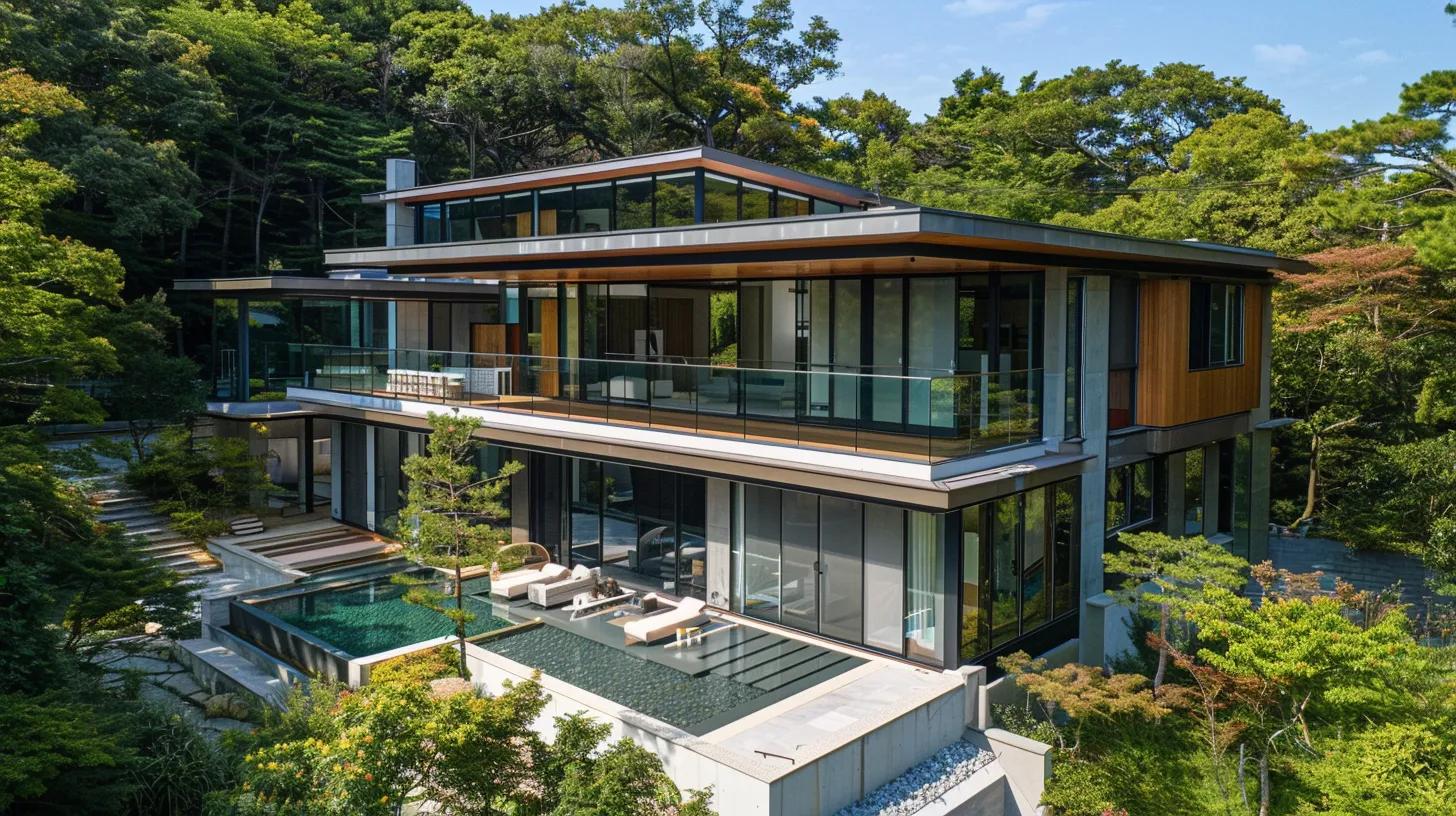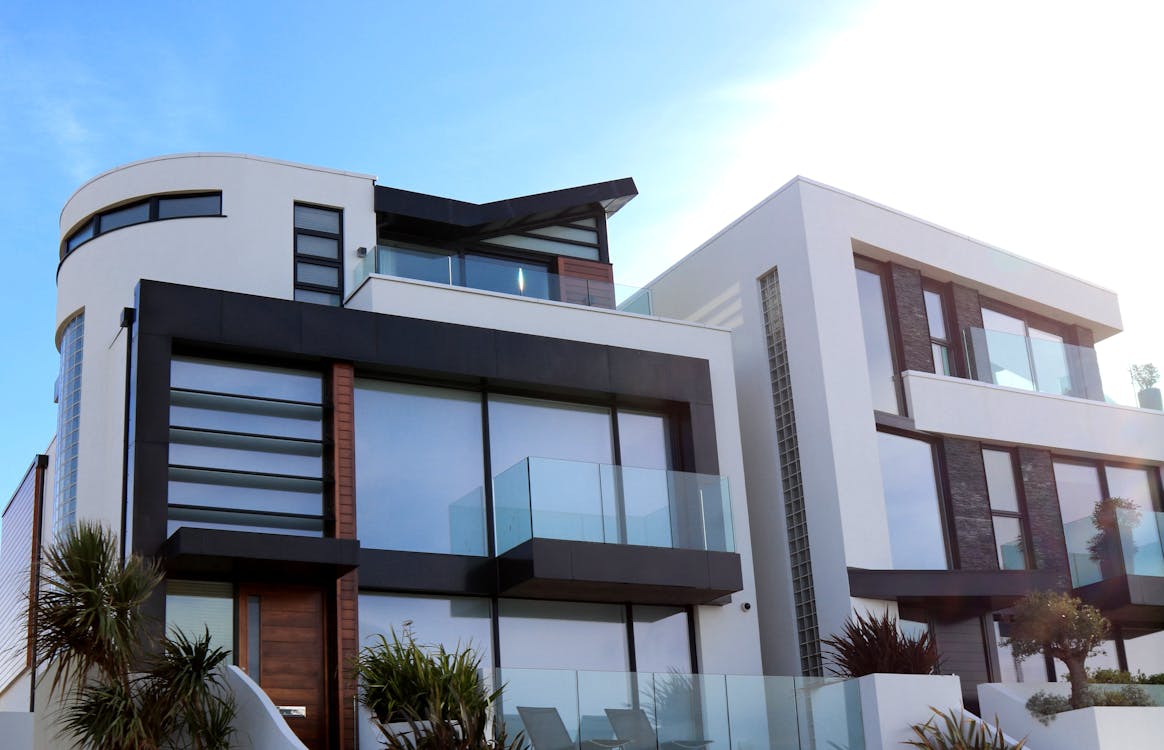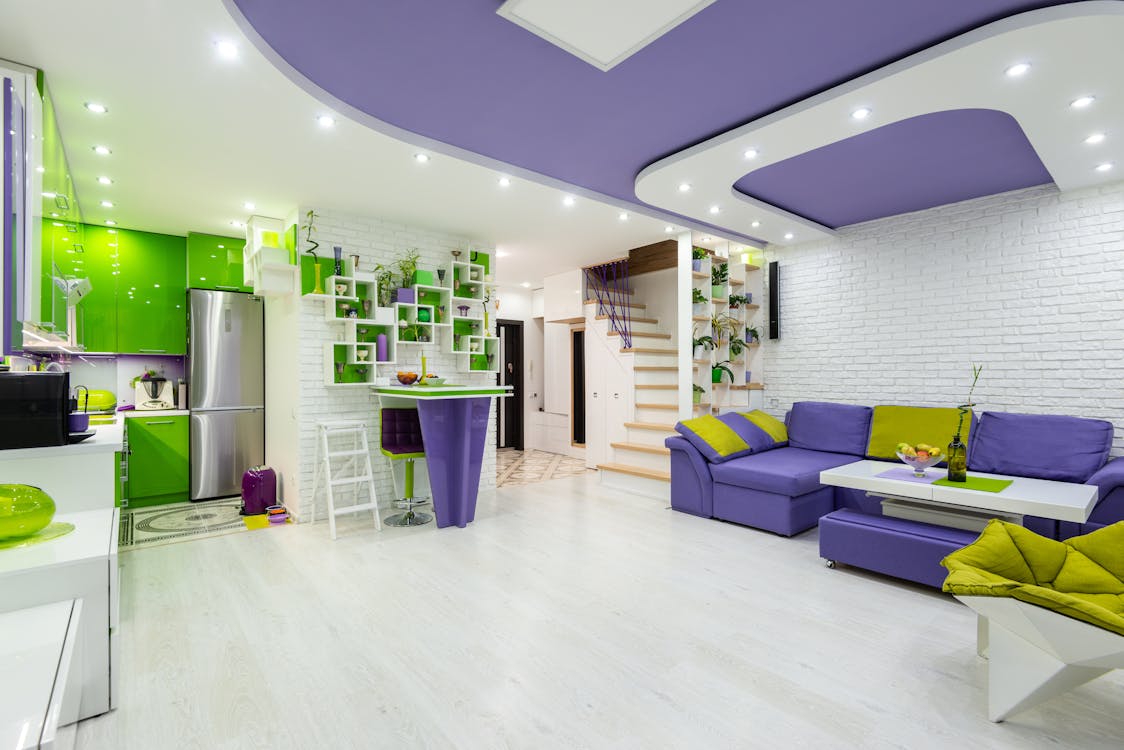
Explore the Versatility of Modern Home Architecture
Are you curious about how modern home architecture can meet diverse needs and styles? This article will explore key aspects of modern home designs, including popular architectural styles, innovative design elements, and the unique materials and textures that define this trend. Readers will gain insights into how these modern styles can provide solutions for both functionality and aesthetic appeal in homebuilding. Discover how understanding modern architecture can help turn your dream home into a reality through careful attention to walls, ceilings, and building material choices influenced by renowned architects like Wallace Harrison and the principles of expressionism.
Key Takeaways
Modern architecture combines traditional elements with innovative designs for a versatile appeal.
Open floor plans facilitate interaction and enhance the spacious feel of contemporary homes.
Sustainable practices are integral to modern design, focusing on eco-friendly materials and energy efficiency.
Large windows and outdoor spaces connect interiors with nature, enriching living areas with natural light.
Influential architects have shaped modern styles by blending aesthetics with practicality in home design.
Defining Modern Home Architectural Styles

Modern home architecture is defined by key characteristics such as arch shapes, innovative lighting solutions, varying roof pitches, and the use of materials like oak. Understanding the historical context of modern architecture assists in appreciating its evolution. The technology significantly influences modern styles, introducing elements like dome structures. Each aspect highlights the versatility and appeal of modern design.
Key Characteristics of Modern Designs
Modern designs often feature courtyards that connect indoor and outdoor spaces, allowing natural light to flood in while providing a private escape. A dormer, another key characteristic, enhances vertical space and adds unique architectural detail. This can be seen in many midcentury modern homes.
Influence of Technology on Modern Styles
Technology plays a crucial role in shaping modern architectural styles. With advancements such as the curtain wall system, builders can create striking glass facades that enhance the aesthetic appeal of structures while allowing ample natural light. Additionally, postmodern architecture has embraced innovative materials and design principles, influencing everything from the compact layout of bungalows to large urban developments that reflect the needs of contemporary living.
Popular Modern Architectural Styles

The essence of contemporary architecture reflects innovation and practicality, merging aesthetics with function. Midcentury modern styles continue to influence today’s designs, emphasizing clean lines and open spaces. Minimalism plays a vital role in promoting simplicity and efficiency. Additionally, the industrial style integrates urban aesthetics, acknowledging influences from Gothic architecture and Art Deco. Each style connects the modern living with rich historical foundations.
The Essence of Contemporary Architecture
The essence of contemporary architecture is rooted in the principle of "form follows function," emphasizing practical design over unnecessary ornamentation. This approach can be seen in brutalist architecture, which showcases the raw beauty of materials such as concrete and wrought iron. Cities like Athens incorporate these modern values with green building practices that enhance sustainability, marrying aesthetics with environmental concerns.
Midcentury Modern Influence Today
Midcentury modern architecture has a lasting influence on today's homes, blending practicality with aesthetics. Elements such as wide chimneys and open living spaces continue to evoke the style while incorporating modern demands. Designs inspired by the American Craftsman movement also showcase simplicity and craftsmanship, making it easy to find harmony in spaces like the Unity Temple, where deconstructivism meets traditional forms.
Emphasis on open living spaces.
Integration of natural materials and craftsmanship.
Incorporation of iconic elements like wide chimneys.
Connection to historical influences, such as the American Craftsman style.
Modern interpretations of deconstructivism in design.
Minimalism and Its Role in Modern Designs
Minimalism plays a significant role in modern designs by focusing on simplicity and functionality. This approach often leads to a streamlined façade, allowing spaces to feel open and uncluttered, which can reduce the overall cost to build a contemporary home. Inspiration from architects like Frank Lloyd Wright is evident in how minimalist designs incorporate natural materials and thoughtful framing, creating a connection to the environment while optimizing space in structures ranging from single-story homes to towering skyscrapers.
Industrial Style and Urban Aesthetics
Industrial style embraces raw materials and urban aesthetics, often highlighting features found in warehouses and factories. The use of elements like exposed brick, metal beams, and open spaces can transform modern architecture into a canvas that celebrates simplicity and functionality. Famed structures like the Chrysler Building and The Crystal Palace demonstrate how such designs can harmonize with both historical foundations and contemporary living needs.
Innovative Design Elements in Modern Architecture

Open floor plans create a seamless flow between spaces, allowing for versatility in modern home design. Integrating natural light and outdoor spaces enhances the overall aesthetic and functionality, especially in coastal regions or the southwestern United States. Furthermore, sustainable practices in home improvement, including the use of steel and eco-friendly materials, reflect a commitment to both style and the environment.
Open Floor Plans and Spatial Flow
Open floor plans are a defining feature in modern home architecture, exemplified by the designs of renowned architects like Renzo Piano. This layout blurs the lines between different areas, making spaces feel larger and encouraging family interaction. Additionally, the combination of open spaces with intentional elements, such as a pediment or other ornamental details, pays homage to aesthetics from the Victorian era while catering to contemporary needs, showcasing the versatility of modern home design.
Integration of Natural Light and Outdoor Spaces
Integrating natural light and outdoor spaces is essential in modern architecture. A contemporary home architect often uses large windows and open designs to bring the outside in, creating vibrant living areas. For instance, using sustainable lumber in a barn dominium design enhances aesthetics and promotes a connection with nature, echoing elements seen in medieval architecture and materials like béton brut. This approach fosters a harmonious blend between indoor comfort and outdoor beauty.
Sustainable Practices in Modern Homes
Sustainable practices in modern homes focus on reducing environmental impact while enhancing aesthetic value. Features like molding and gable roofs offer structural benefits and reflect styles such as those found in Italian architecture. Builders in the modern age incorporate eco-friendly materials and energy-efficient designs, similar to the principles seen in iconic structures like the Seagram Building, to create beautiful and responsible homes.
Focus on eco-friendly materials.
Integration of energy-efficient designs.
Use of architectural elements like gable roofs.
Incorporation of molding for aesthetic appeal.
Inspirations from Italian architecture.
Examples from modern Southern California homes.
Versatility in Materials and Textures

Utilizing wood in modern home design brings warmth and natural beauty, while glass plays a key role in creating transparency and expansive views. Mixing textiles and finishes adds depth to spaces, showcasing elements from movements like constructivism and metabolism. Each area highlights how the chosen materials can reflect individual styles.
Utilizing Wood in Modern Home Design
Utilizing wood in modern home design adds warmth and character, making it a popular choice for various architectural styles. Elements like exposed beams enhance the aesthetic appeal and resonate with traditional influences, such as Georgian architecture, while pairing well with contemporary materials like stucco. Homes in regions like The Hamptons often showcase this versatility, combining wood accents for a cozy feel with sleek finishes that maintain a modern edge:
Wood adds warmth and character to modern designs.
Exposed beams connect traditional and contemporary styles.
Wood pairs well with stucco for a balanced look.
Homes in The Hamptons highlight the versatility of wood in architecture.
The Role of Glass in Creating Transparency
The role of glass in modern home architecture centers on creating transparency and openness, which enhances both interior design and the overall living experience. In North America, popular home styles often incorporate large glass windows to invite natural light, connecting indoor spaces with the surrounding environment. This philosophy aligns with elements of federal architecture, where balancing form and function creates inviting atmospheres and fosters a sense of space, making homes feel larger and more welcoming.
Mixing Textiles and Finishes for Depth
Mixing textiles and finishes can create a rich, layered aesthetic in modern home design. Architects often use different materials to highlight geometry, incorporating elements that reflect styles from neoclassical architecture while adapting to contemporary needs. For example, a bathroom may combine sleek tiles with textured fabrics, providing a balanced visual experience that enhances comfort and style in suburban homes.
The Impact of Cultural Influences on Modern Styles

Global architectural trends in contemporary homes highlight the influence of various cultures on modern styles. This section explores how traditional elements, such as cathedral roofs and pueblo designs, blend seamlessly with innovative techniques in spaces like bedrooms and Cape Cod houses.
Global Architectural Trends in Contemporary Homes
Global architectural trends in contemporary homes showcase a fusion of cultural influences and innovative designs. One significant figure in this movement is Le Corbusier, whose principles of expressionist architecture often emphasize functionality and aesthetic appeal. In places like Dessau, structures featuring plaster finishes and towering elements exemplify how historical techniques can blend with modern needs, creating a captivating architectural landscape.
Influence of Le Corbusier on modern design.
Expressionist architecture's focus on functionality.
Use of plaster and towering structures in Dessau.
Fusion of cultural elements in contemporary homes.
Blending Tradition With Modern Techniques
Blending tradition with modern techniques results in unique architectural expressions that reflect both historical influences and contemporary needs. For example, Ludwig Mies van der Rohe's Barcelona Pavilion showcases sleek lines and open spaces, demonstrating how modern design can incorporate traditional overhangs for both aesthetic appeal and functionality. Similarly, elements of saltbox house design and Romanesque revival architecture can be harmonized with modern materials to create inviting living spaces that honor the past while embracing innovation.
Frequently Asked Questions About Modern Home Architectural Styles

The section on frequently asked questions addresses common myths about modern architecture, clarifying misconceptions about styles such as victorian architecture and rococo. It also offers guidance on choosing the right modern style for a home, with insights into how futurism and mass appeal can shape design decisions. These topics provide practical knowledge for anyone exploring the world of modern architectural styles.
Common Myths About Modern Architecture
Many myths surround modern architecture, leading to misconceptions about its designs and practical applications. For instance, some believe that a glass house lacks privacy or warmth, but careful design choices, including strategic landscaping and interior layout, create intimate spaces while maximizing natural light. Another common myth is that modern homes prioritize aesthetics over sustainability; however, innovative approaches often combine stylish elements with eco-friendly materials, ensuring that structures remain functional and environmentally responsible.
How to Choose the Right Modern Style for Your Home
Choosing the right modern style for a home involves considering personal preferences and practical needs. For example, a homeowner may opt for modern prairie style homes to achieve a cozy, grounded look, or they could choose the international style for a sleek, minimalist approach. Incorporating features like a balcony or specific eaves can enhance the design further, while drawing inspiration from iconic structures like the Fagus Factory can provide innovative ideas that fit contemporary living.
Additional Resources for Understanding Modern Architecture

Recommended books on modern home design offer insights into various architectural styles, including shingle style and gothic revival architecture. Online platforms serve as great sources of inspiration, showcasing diverse ideas from different cultures, such as French architecture. These resources can guide homeowners in selecting siding and room layouts that reflect contemporary preferences while appreciating historical influences.
Recommended Books on Modern Home Design
Recommended books on modern home design offer valuable insights into various styles, including how stained glass can enhance a townhouse's aesthetic or how elements from cultures around the world can influence contemporary architecture. Works by architects like Philip Johnson provide practical examples of integrating modern techniques with traditional concepts, such as log cabin designs adapted for modern living. Homeowners can gain inspiration and learn how to harmonize modern features with historical influences through these resources:
Stained glass as a design element in modern homes
Influence of culture on contemporary architecture styles
Insights from Philip Johnson's architectural legacy
Modern adaptations of traditional log cabin designs
Designing townhouses that reflect unique personalities
Online Platforms for Architectural Inspiration
Online platforms serve as valuable resources for those seeking inspiration in modern home architecture. Websites and social media channels showcase a variety of styles, including influences from Renaissance architecture and features like elegant patios that connect indoor and outdoor spaces. Users can find innovative ideas, such as incorporating glass sculptures or functional elevators, all while appreciating the breezy aesthetics reminiscent of the Mediterranean Sea, enhancing their understanding of contemporary design possibilities.
Conclusion
Exploring the versatility of modern home architecture reveals how it blends functionality with aesthetic appeal across various styles. From open floor plans to sustainable materials, this approach enhances living spaces while promoting a connection with nature. Incorporating diverse design elements allows homeowners to create unique environments that reflect personal tastes. Ultimately, understanding modern architecture empowers individuals to make informed choices that elevate their homes and enrich their lives.


